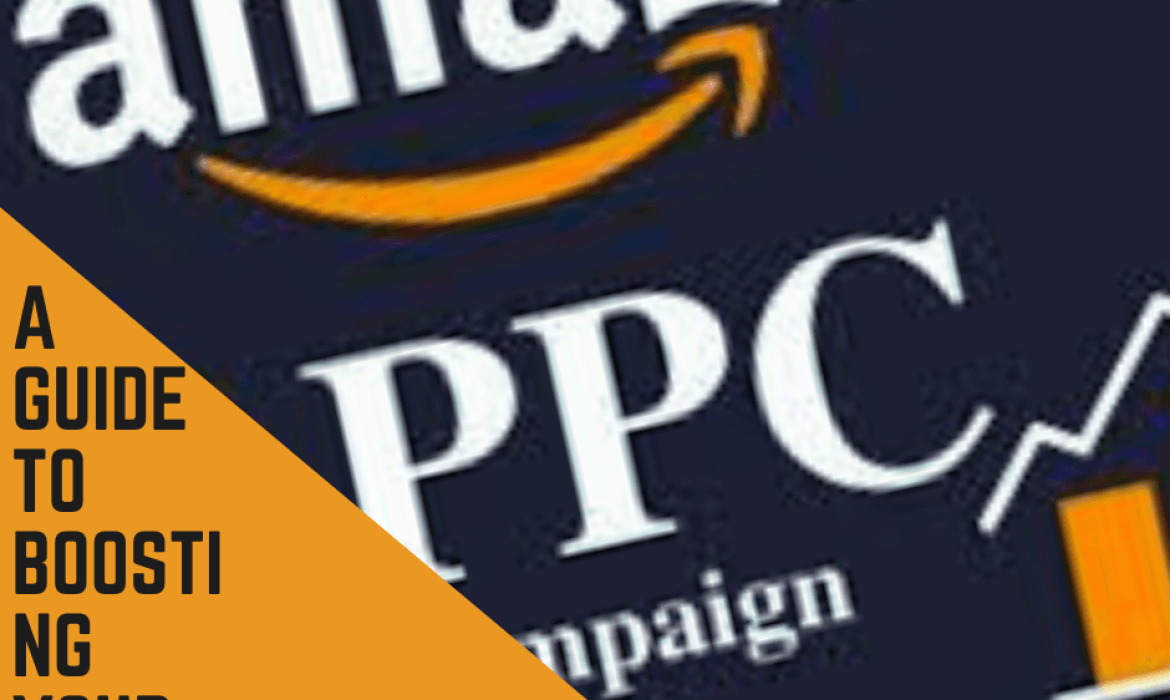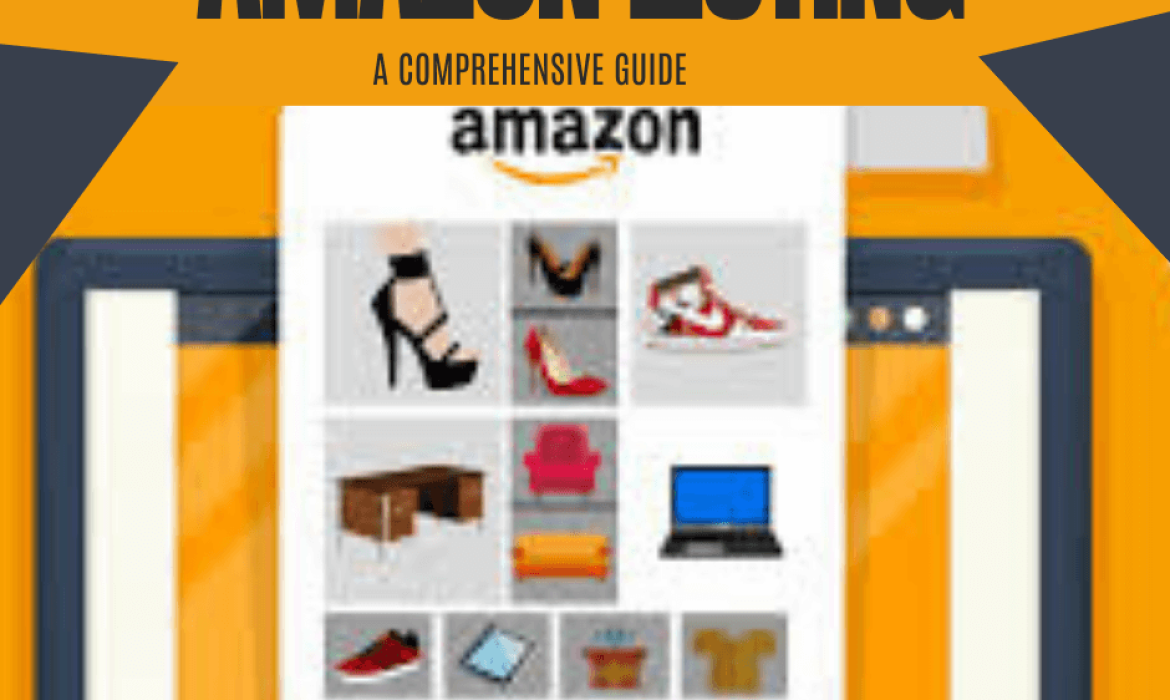How to Enhance Your Amazon Storefront and Succeed with Influencer Marketing
Amazon has totally turned around how businesses sell their products online. They have an active platform with millions of customers at every corner of the earth. Of all the exceptional tools at the disposal of the sellers, Amazon Storefront is probably the most mighty of them all.
This offers sellers a personalized and branded shopping experience on Amazon business, where they are able to showcase their products in a very unique and engaging manner. Whether you’re an established brand or a small business looking to scale, an Amazon Storefront can really elevate your online exposure and drive sales on the marketplace.
What is an Amazon Storefront?
It is a personalized, multi-page space that enables a seller to feature their product listings and show off the brand story to promote products in a more curated, visually appealing manner. Unlike standard product listings, through a storefront, brands are able to control the customer experience from start to finish, with consistent branding, storytelling, and promotions. It’s a key feature for sellers enrolled in Amazon’s Brand Registry program.
Benefits of an Amazon Storefront
Branding Control for amazon storefront:
Amazon Stores lets you have complete creative control over how your brand appears-from custom layouts to graphics to how products are organized and displayed.
Improved Product Discovery:
You consolidate similar products, using your branded page to surface them more easily for your customers.
Amazon provides you with tools, such as the Store Insights dashboard, that show how your storefront is performing in terms of views, sales, and sources of traffic.
Improved Customer Engagement:
Opening an online storefront offers you an opportunity to share your brand story and mission with the world. It will lead to better engagement with your customers and may well bring in more sales and customer loyalty.
How to Create an Amazon Storefront
Setting up an Amazon Storefront is easy, but it requires attention to detail in order to make your store stand out. Here’s how you can set one up in a few easy steps:
Sign Up for Amazon Brand Registry:
Before setting up a storefront, your brand needs to be listed in the Amazon Brand Registry. This ensures that only authorized brands will create storefronts and gives you additional features like enhanced brand content.
Access the amazon storefront Builder:
Once enrolled, navigate to Seller Central or the Amazon Advertising console, then click on the “Stores” tab. You can launch the Store Builder, Amazon’s intuitive tool for laying out your virtual storefront.
Choose a Template:
Amazon has provided a few templates that allow you to visually create a clean and professional storefront. You may start from scratch or use a template that best describes the look of your brand.
Page Customization:
Assign product categories, featured products, and banners to their respective pages. This is the place to include high-resolution images and great descriptions, along with a call to action that invites others to learn more. Use this area to tell your brand story or to tout top-selling items.
Publish and Promotion:
Publish your Store once it is set up and drive traffic to it using Amazon Sponsored Brands Ads or social media platforms.
Working with Amazon Storefront Influencers
One of the best ways to grow an Amazon Storefront is by leveraging influencers. Influencers bring credibility and a new wave of brand exposure that can help drive more traffic and sales to your storefront. With Amazon Storefront, influencers have the ability to create their own curated storefronts where they recommend products. The Amazon Storefront Influencer program empowers influencers to create their own curated storefronts where they recommend products. Working with influencers opens up opportunities for accessing new customer segments and increases the visibility of a seller.
Influencer Strategies to Leverage Amazon Storefront:
Find the right influencers that can help your brand build a target audience for your store. This may be on platforms like Instagram, YouTube, and TikTok.
Offer Incentives:
Whether it is a percentage of sales or exclusive access to new products, offering incentives will incentivize the influencers to participate in collabs and promote your storefront more regularly.
Build Real Relationships:
Partner with influencers who genuinely love your products and use them. Organic recommendations tend to drive more positive responses and last longer in people’s minds.
Tracking Performance:
Engage Amazon Store Insights or, for something really simple, make sure that every influencer has a unique referral link so you can track which influencer is producing the most sales and brand awareness.
Conclusion
It’s imperative for any serious brand desiring to build its presence on the Amazon Storefront. Here, the imagery of your brand improves, customer engagement becomes more effective, and product discovery is enhanced. With other strategies combined, influencer marketing extends reach, builds credibility for your brand, therefore driving more traffic to a virtual storefront. If you adhere to these steps, you will be on the right track to maximizing Amazon Storefronts for business success.
Product Videography: How to Stand Out in the Digital Age
Product videography – a dynamic and visually engaging way to show off your products and tell your brand story. In this digital age, getting the attention of potential customers is harder than ever. With so many brands competing for the same audience, it’s not just about having great products and services.
In this post we’ll look at the power of product videography, the benefits and how you can create videos that resonate with your audience.
What is Products Videography?
Products videography is the art of filming your products in action. Unlike static images, videos can bring your products to life, show off their features, benefits and unique selling points in a way static images can’t. Think of it as giving your product its own starring role in a mini-movie where it can shine and captivate your audience.
The Benefits of Products Videography
1. Higher Engagement:
Videos are more engaging than images or text. They can grab and hold the viewer’s attention making them more likely to watch the whole video and absorb your message.
2. Better Conversion Rates:
Studies have shown product videos can increase conversion rates. 89% of consumers said watching a video convinced them to buy a product or service1.
3. Better SEO:
Videos can improve your website’s SEO. Search engines love websites with video content which can lead to higher rankings and more organic traffic.
4. More Social Sharing:
Videos are highly shareable on social media. A great product video can go viral, reach a wider audience and drive more traffic to your website.
5. Increased Brand Trust:
High quality product videos can build trust with your audience. They give a transparent view of your product, show it in action and demonstrate its value.
Creating a Compelling product videography
Creating a product video that resonates with your audience requires careful planning and execution. Here are some steps to guide you through the process:
1. Pre-production Planning
Before you start filming, it’s essential to plan your video. Define the purpose of your video and the message you want to convey. Identify your target audience and tailor your content to their preferences and needs. Script your video, outlining what you’ll say, the shots you need, and any actors or presenters involved. Plan your location, props, and, of course, the star of the show—your product.
2. Filming Techniques
When it comes to filming, lighting is crucial. Good lighting can make your product look its best, highlighting its features and making it more appealing. Use natural light or well-placed artificial light to achieve the desired effect. Choose your angles wisely, focusing on your product’s unique features. Capture close-ups to show details and wide shots to provide context.
3. Post-production Editing
Editing is where your video comes together. Use editing software to cut and arrange your footage, add music, and include any necessary text or graphics. Pay attention to pacing, ensuring that your video flows smoothly and keeps the viewer engaged. Add a call-to-action at the end, encouraging viewers to visit your website, make a purchase, or share the video on social media.
4. Distribution and Promotion
Once your video is ready, it’s time to share it with the world. Upload it to your website, social media platforms, and video-sharing sites like YouTube and Vimeo. Promote your video through email marketing, social media ads, and collaborations with influencers. Monitor its performance and gather feedback to improve future videos.
Types of products videography
There are several types of product videos you can create, each serving a different purpose:
1. Demo Videos:
Show your product in action, demonstrating how it works and highlighting its features.
2. Explainer Videos:
Use a combination of audio and text to explain how your product works and share the story behind your brand.
3. Tutorial Videos:
Provide step-by-step instructions on how to use your product, helping customers get the most out of their purchase.
4. Testimonial Videos:
Feature satisfied customers sharing their experiences with your product, building trust and credibility.
5. Unboxing Videos:
Capture the excitement of unboxing your product, showcasing its packaging and first impressions.
Best Practices for products videography
To create effective product videos, keep these best practices in mind:
1. Keep it Short and Sweet:
Attention spans are short, so aim to keep your videos concise and to the point. A length of 1-2 minutes is ideal for most product videos.
2. Focus on Quality:
Invest in good equipment and professional editing software to ensure your videos look polished and professional.
3. Tell a Story:
Use storytelling techniques to make your videos more engaging. Show how your product solves a problem or enhances the customer’s life.
4. Highlight Benefits:
Focus on the benefits of your product, not just its features. Show how it can make the customer’s life easier, better, or more enjoyable.
5. Include a Call-to-Action:
Encourage viewers to take the next step, whether it’s visiting your website, making a purchase, or sharing the video.
Conclusion
Product videography is a powerful tool that can elevate your brand and help you stand out in a ecommerce market. By creating engaging, high-quality videos, you can showcase your products in the best light, build trust with your audience, and drive more conversions. Whether you’re a seasoned videographer or just starting, the tips and best practices outlined in this post will help you create compelling product videos that resonate with your audience and achieve your marketing goals.
Unlocking the Power of Amazon PPC: A Guide to Boosting Your Sales
In the competitive world of Amazon, sellers are constantly seeking ways to stand out and increase sales. One of the most effective strategies is leveraging Amazon’s Pay-Per-Click (PPC) advertising. Whether you’re a seasoned seller or new to the platform, mastering Amazon PPC can significantly enhance your product visibility and drive sales.
In this blog, we’ll explore the essentials of Amazon PPC, why it’s important, and how you can optimize your campaigns for maximum results.
What is Amazon PPC?
Amazon Pay-Per-Click is a promoting model where dealers pay an expense each time their advertisement is clicked. ads appear in prominent locations on Amazon, such as at the top of search results or within product detail pages. There are three fundamental kinds of Amazon PPC ads:
1. Sponsored Products:
Amazon PPC ads promote individual product listings and appear within search results and on product detail pages. They are highly effective for driving traffic directly to a specific product.
2. Sponsored Brands:
Amazon PPC ads showcase your brand and a selection of products. They typically appear at the top of search results, helping to increase brand visibility and establish your presence on Amazon.
3. Sponsored Display:
Amazon PPC ads target customers both on and off Amazon, allowing you to re-engage shoppers who have viewed your products or similar products. They are useful for retargeting and expanding your reach beyond Amazon.
Why Amazon PPC is Crucial for Success
Amazon PPC is not just an option—it’s a necessity in today’s e-commerce landscape. Here’s why
Increased Visibility:
With millions of products on Amazon, standing out can be challenging. PPC ads place your products in front of potential customers, increasing your chances of being seen.
Targeted Advertising:
Amazon PPC allows you to target specific keywords, customer interests, and even competitor products, ensuring your ads reach the most relevant audience.
Measurable ROI:
amazon PPC campaigns provide detailed analytics, enabling you to track performance, adjust bids, and optimize your strategy based on real-time data.
Boosted Organic Rankings:
Successful PPC campaigns can improve your product’s organic ranking by driving more traffic and sales, leading to increased visibility even without ads.
Step-by-step Instructions to Advance Your Amazon PPC Campaigns
To make the most of your Amazon Pay-Per-Click campaigns, consider the following strategies:
1. Keyword Research:
Use tools like Amazon’s keyword planner or third-party software to identify high-performing keywords relevant to your products. Long-tail keywords frequently have less rivalry and can prompt higher transformation rates.
2. Strategic Bidding:
Start with automatic campaigns to gather data, then transition to manual campaigns where you can set bids for specific keywords. Adjust bids based on performance—raise them for high-converting keywords and lower them for those that underperform.
3. Negative Keywords:
Identify and exclude keywords that aren’t relevant to your products or that generate clicks without conversions. This prevents wasted ad spend.
4. Regular Monitoring and Optimization:
Pay-Per-Click campaign require ongoing management. Regularly review your campaigns, analyze performance metrics (like ACOS and CTR), and make adjustments as needed. This will help you maintain a healthy return on investment.
5. A/B Testing:
Test different ad creatives, headlines, and product images to see what resonates best with your audience. Continuous testing and optimization can lead to better performance over time.
6. Focus on Product Listings:
Your ad is only as good as your product listing. Ensure your listings are optimized with high-quality images, detailed descriptions, and positive reviews to increase conversion rates.
Final Thoughts
Amazon PPC is a powerful tool that can transform your sales and grow your brand. By understanding the basics, setting clear goals, and continuously optimizing your campaigns, you can maximize your ROI and achieve long-term success on Amazon. Whether you’re just starting out or looking to refine your strategy, the key is to stay informed, be patient, and keep testing. With the right approach, Amazon PPC can be a game-changer for your e-commerce business.
How to Optimize Your Amazon Listing: A Comprehensive Guide
In the competitive world of e-commerce, having a well-optimized Amazon listing is crucial to driving traffic and boosting sales. Amazon is a marketplace with millions of products, and standing out requires strategic use of keywords, compelling product descriptions, and attention to detail. In this guide, we’ll walk you through the essential steps to optimize your Amazon listing effectively.
1. Understanding Amazon’s A9 Algorithm
Before diving into optimization techniques, it’s important to understand Amazon’s search algorithm, A9. This algorithm determines which products are shown in search results based on relevance and performance. Factors like keywords, sales history, customer reviews, and conversion rates all play a role in ranking your product.
2. Keyword Research for Amazon listing
Keywords are the groundwork of your Amazon listing optimization. The right keywords can make or break your visibility on the platform. This is the way to direct compelling keyword research:
Use Amazon’s Auto-Suggest:
Start by typing relevant terms into Amazon’s search bar and noting the suggestions. These are popular search terms used by potential buyers.
Leverage Keyword Research Tools:
Tools like Helium 10, Jungle Scout, and Sonar can provide valuable insights into search volume, competition, and related keywords.
Analyze Competitors through Amazon listing:
Look at top-performing listings in your category to identify common keywords. Utilize this data to refine your own keyword strategy.
3. Optimize the Product Title in Amazon listing
The product title is one of the most basic components of your listing. It should be concise, expressive, and incorporate your essential keywords. Amazon allows up to 200 characters in the title, but shorter titles (under 80 characters) tend to perform better. Here are a few ways to make a successful title:
Start with the Brand Name:
This establishes trust and recognition.
Include Primary Keywords:
Ensure your most important keywords appear early in the title.
Highlight Key Features in Amazon listing:
Include product attributes such as size, color, quantity, and unique selling points.
Avoid Keyword Stuffing:
While keywords are important, overloading your title can make it look spammy and reduce readability.
4. Write Compelling Bullet Points
Bullet points are where you can detail the benefits and features of your product. They should be concise yet informative, focusing on how your product solves a problem or meets a need. Here’s how to optimize your bullet points:
Prioritize Benefits Over Features:
Focus on what the customer will gain from the product rather than just listing technical specifications.
Incorporate Secondary Keywords:
Use this space to naturally include additional keywords that didn’t fit into the title.
Highlight Unique Selling Points in Amazon listing:
Mention what sets your product apart from competitors.
Keep It Scannable:
Use short sentences and avoid lengthy paragraphs to ensure readability.
5. Craft a Persuasive Product Description in Amazon listing
Amazon product images description is an opportunity to tell a more detailed story about your product. While many buyers may not read it in full, it’s still essential for those who want more information.
This is the way to make your portrayal stick out:
Use HTML Formatting:
Amazon allows basic HTML tags like `<b>` for bold text and `<br>` for line breaks. This helps improve readability and emphasize key points.
Tell a Story:
Use the description to create an emotional connection with the buyer. Explain how your product can improve their life or solve a problem.
Include Keywords while listing in Amazon:
Naturally incorporate keywords without compromising on the flow and readability of the text.
Address Common Questions:
Think about potential customer concerns or queries and address them within the description.
6. Optimize Product Images
Images are one of the most critical aspects of your listing. They are often the first thing that catches a buyer’s eye, so they need to be high-quality and informative. This is the way to improve your amazon product images.
Use High-Resolution Images:
Ensure that your images are at least 1000 pixels on the longest side to enable Amazon’s zoom function.
Show Multiple Angles in Amazon listing:
Include images that show your product from different angles and in various contexts of use.
Highlight Key Features:
Use infographics or annotations to draw attention to important product features.
Follow Amazon listing Guidelines:
Ensure that your images meet Amazon listing requirements, such as having a pure white background for the main image.
7. Encourage Customer Reviews
Customer reviews play a significant role in your product’s credibility and ranking on Amazon. Here’s how to encourage more reviews:
Provide brilliant Customer support:
Guarantee that your customers have a positive involvement in your product and service. Answer expeditiously to inquiries and resolve issues rapidly.
Follow Up with Buyers:
Use Amazon’s Request a Review button to politely ask for feedback. Make sure your request is compliant with Amazon’s review policies.
Include Inserts:
Consider adding product inserts in your packaging that thank the buyer and invite them to leave a review.
8. Monitor and Adjust Your Amazon Listing
Optimization is an ongoing process. Consistently screen your listing’s performance utilizing Amazon’s Vender central tools. Track metrics like conversion rates, click-through rates (CTR), and keyword ranking. Based on this data, make necessary adjustments to your keywords, title, bullet points, and amazon product images.
Conclusion
Optimizing your Amazon listing is not a one-time task but an ongoing process that requires attention to detail and constant tweaking. By following the steps outlined in this guide, you can improve your product’s visibility, increase traffic, and ultimately drive more sales on Amazon. Remember, the key to a successful listing is balancing keyword optimization with a focus on providing value to your customers. Happy selling!
The Vital Role of Amazon Business in E-commerce: A Game-Changer
Amazon business stand out as a titan, providing unparalleled opportunities for business owners. Whether you’re a seasoned entrepreneur or just starting, understanding Amazon’s significance in e-commerce is crucial for success.
Amazon: The E-commerce Behemoth
Amazon began as a modest online bookstore in 1994 but quickly transformed into the world’s largest online retailer. With over 300 million active users and a presence in nearly every country, Amazon business offers a global platform to reach customers far beyond traditional brick-and-mortar stores.
Amazon business customer service isn’t its only strength. Amazon sophisticated logistics network, amazon business Prime membership program, and robust technological infrastructure make it an invaluable partner for businesses of all sizes.
Why Amazon Business Matters to Owners
1. Unmatched Reach and Visibility in:
Amazon’s vast user base provides businesses access to millions of potential customers every day. This reach is invaluable for brands looking to expand their footprint and increase sales. Even small businesses can compete on a level playing field with larger corporations, thanks to Amazon’s algorithm that promotes products based on customer interest rather than company size.
2. Ease of Entry and Scalability:
Amazon’s user-friendly interface and extensive support make it easy for business owners to get started. With options like Fulfillment by Amazon (FBA), sellers can leverage Amazon’s warehousing, shipping, and customer service capabilities. This allows businesses to scale rapidly without the overhead costs associated with traditional expansion.
3. Trust and Credibility:
Consumers trust Amazon. This trust extends to businesses that sell on the platform. By listing products on Amazon business can benefit from this credibility, which can lead to increased sales and customer
loyalty. The platform’s review system also allows for transparent feedback, helping businesses build a strong reputation.
4. Advanced Marketing Tools:
Amazon offers a suite of marketing tools designed to help businesses grow. From sponsored ads to detailed analytics, sellers can target specific demographics, optimize listings, and track performance in real-time. These tools are essential for businesses looking to refine their strategies and maximize return on investment.
5. Global Expansion in Amazon business:
One of Amazon’s most significant advantages is its global reach. With minimal effort, businesses can tap into international markets, reaching customers in countries where they might otherwise have no presence. Amazon’s global infrastructure simplifies the complexities of cross-border selling, making international expansion more accessible than ever.
The Future of Amazon Business and E-commerce:
As Amazon continues to innovate, the opportunities for businesses on the platform are bound to grow. From artificial intelligence and machine learning to advancements in logistics and delivery, Amazon is poised to remain at the forefront of e-commerce. Businesses that align themselves with Amazon’s evolving ecosystem will likely see continued growth and success.
However, the platform’s dominance also means that competition is fierce. To thrive on Amazon business must be strategic, leveraging the platform’s tools and resources while continuously refining their approach.
Conclusion:
For business owners, Amazon ecommerce platform is more than just a platform; it’s a critical partner in the modern marketplace. Its vast reach, trustworthiness, and innovative tools offer unparalleled opportunities for growth and success. By understanding and embracing Amazon business owners can position themselves for long-term success in the ever-evolving world of e-commerce.
Whether you’re looking to scale your business, enter new markets, or simply increase your brand’s visibility, Amazon provides the platform to do so. The importance of Amazon in the e-commerce landscape cannot be overstated—it’s a game-changer for businesses everywhere.





